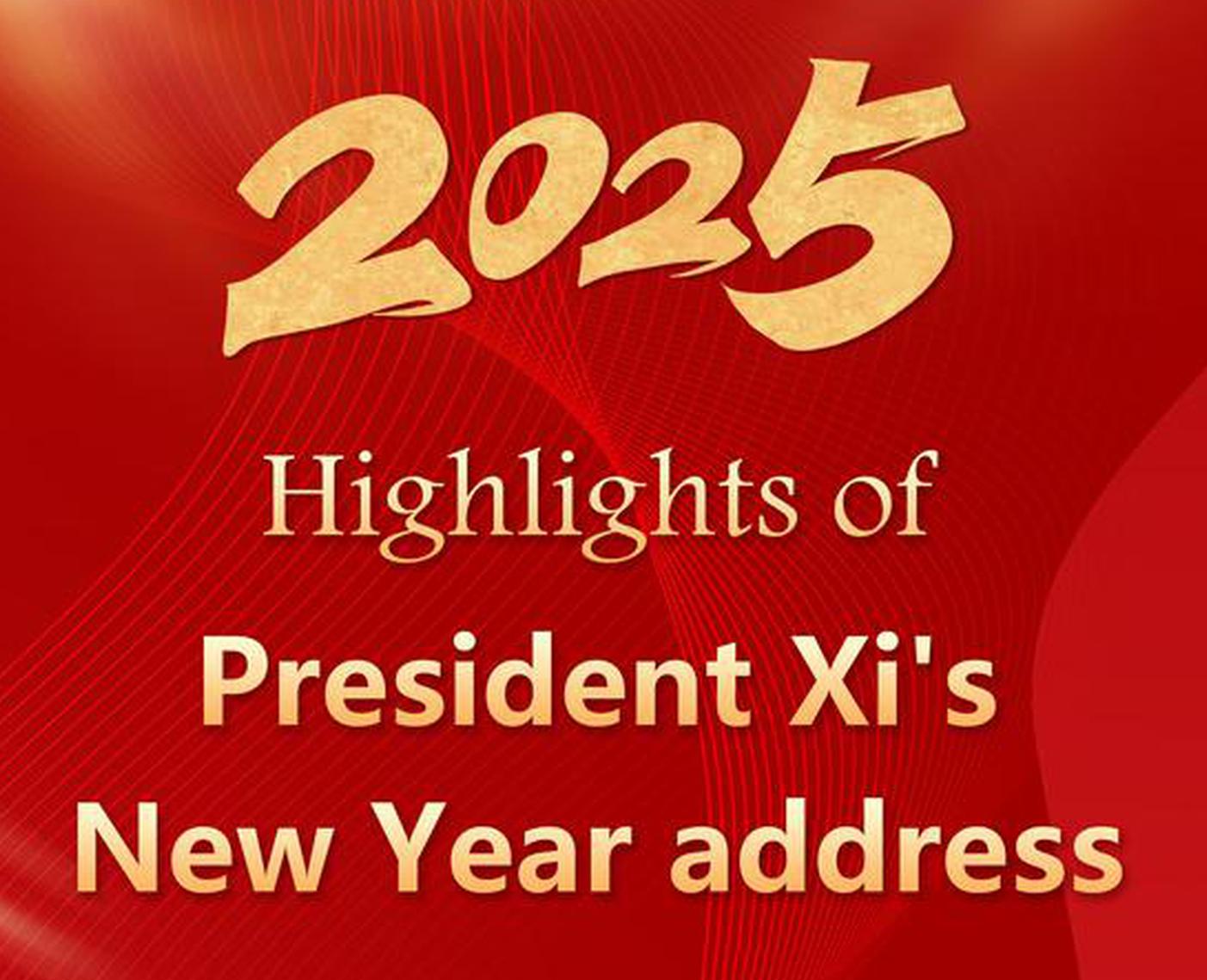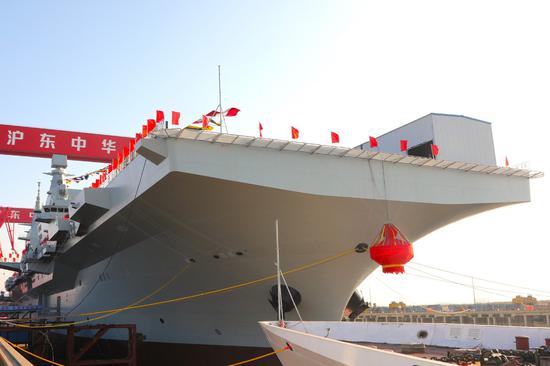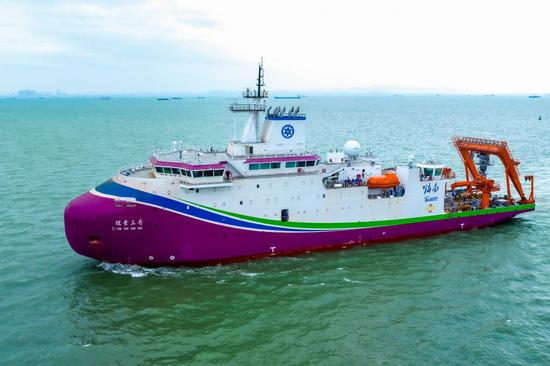(ECNS) -- In recent years, China’s normal and legal maritime activities in the South China Sea have often been hyped as threats to "impede freedom of navigation" and "endanger navigation safety." Besides, the United States has frequently used "Freedom of Navigation" (FON) as a pretext to showcase its military presence and conduct joint cruise exercises in the region.
The reason that the U.S. upholds so-called FON is to maintain its own maritime hegemony, said Yang Xiao, a marine expert from the China Institutes of Contemporary International Relations (CICIR) during an exclusive interview with China News Network.
Yang explained that the U.S. leverages FON as a geopolitical tool, inciting and supporting its allies like the Philippines to provoke disputes in the South China Sea. Additionally, the U.S. has formed small coalitions to stir up tensions, seriously threatening regional peace and stability.
Destructor: U.S. "willful trespassing" undermines regional stability
"About one hundred aircraft sorties approach the airspace of the Chinese Mainland and Hainan Island every year, most of which fly to less than 30 nautical miles from the baseline of China's territorial waters," accroding to a report released by the South China Sea Strategic Situation Probing Initiative (SCSPI), a China-based think tank, in Beijing recently.
"For example, on Dec. 8, 2022, a U.S. P-8A anti-submarine patrol aircraft flew over the Taiwan Strait, coming within less than 13 nautical miles from the baseline point of the territorial sea in Fuzhou, almost entering China’s airspace," the report indicated..
The report also noted that in recent years, the U.S. military has become increasingly aggressive in its close-in reconnaissance against China in the South China Sea, frequently approaching the airspace of Chinese mainland and Hainan Island. However, extra-regional countries like the U.S., often disguise provocative military activities against the coastal states of the South China Sea as "freedom of navigation" issues.
What is the true intention behind these actions? In Yang’s view, the United Nations Convention on the Law of the Sea serves as one of the cornerstones of modern maritime orders. However, the U.S. has so far refused to ratify the convention, selectively applying its rules in a pragmatic and self-serving manner. What’s worse, the U.S. put forward the so-called FON program even before the UN convention came into force, with the aim of challenging other countries’ maritime rights and interests.
Yang emphasized that the so-called U.S. FON is fundamentally different from principles enshrined in international law. "The U.S. consistently demands more rights than other countries but refuses to share maritime rights and interests with other countries, nor does it view the maritime rights, interests, or friendly exchanges of other nations on an equal footing."
"The root cause lies in the U.S.’s desire to maintain its maritime hegemony and serve its own strategic interests," Yang further noted.
According to the Freedom of Navigation Report for Fiscal Year 2023 released by the U.S. Department of Defense, from Oct. 1, 2022, to Sept. 30, 2023, the U.S. forces operationally challenged 29 different "excessive maritime claims" advanced by 17 countries and regions including China.
When being asked to share comment on this, Wu Qian, Chinese spokesperson for the Ministry of National Defense, pointed out that there is a huge difference between navigation and trespassing and between freedom and willfulness.
He stated that China firmly stands against "willful trespassing" and opposes any country conducting unlawful provocations in the name of "freedom of navigation" to harm the sovereignty and security of coastal countries and undermine regional peace and stability.
Disturber: the U.S. and its allies keep stoking tensions
According to the U.S. Department of Defense FON reports, at the early stage, U.S. freedom of navigation operations (FONOPs) in the South China Sea were directed at Vietnam, Malaysia, and the Philippines, rather than China until 2007.
Yang Xiao said that the U.S. has turned its attention back to Asia and launched the Rebalance to Asia strategy during the last few years. From the Obama administration to the Trump administration and the Biden administration, the U.S. has gradually adjusted its strategic policies on the South China Sea and intensified its provocations against China, which has disrupted the South China Sea situation.
On the one hand, the U.S. frequently incited and supported certain countries to create buzzes in the South China Sea.
Yang Xiao pointed out that for some time, the U.S. has been supporting the Philippines’ illegal claims, provoking and encouraging its infringements against China territorial and sovereign interests in the South China Sea by providing intelligence and military support, and strengthening tactical exchanges and training.
In particular, the Philippine government now refuses to hold any dialogue, communication or consultation with China and even undermined the established mechanisms for conflict resolutions, which make disputes between China and the Philippines more complicated, and in turn would harm its own economic development and people’s life, Yang further explained.
On the contrary, according to Yang Xiao, China has always been committed to resolving the South China Sea issue through dialogue and negotiation with countries concerned to maintain regional peace and stability.
“When you sit down together for communication and consultation, it can be positive for regional peace and stability. When you fail to keep promises, it will only create trouble for yourself and neighboring countries," said Yang.
On the other hand, external forces including the U.S. have been attempting to form small coalitions around China and meddle in the situation in the South China Sea.
Yang noticed that during the past years, the U.S. has established small circles such as Quadrilateral Security Dialogue, known as Quad, with Australia, New Zealand, Canada and some European countries. These countries, though had nothing to do with the South China Sea, often made buzzes to undermine regional peace and stability.
In the meantime, Yang mentioned that China and ASEAN countries have made continuous efforts to jointly promote regional peace and stability. For example, Malaysia, Indonesia and Vietnam and other countries are working with China to resolve issues through dialogue and negotiation.
“So who is on the side of peace and cooperation? Who is on the side of provocation and destruction? The world should see that very clearly.” Yang emphasized, “This is where the biggest challenge to peace and stability in the South China Sea lies.”


















































 京公网安备 11010202009201号
京公网安备 11010202009201号